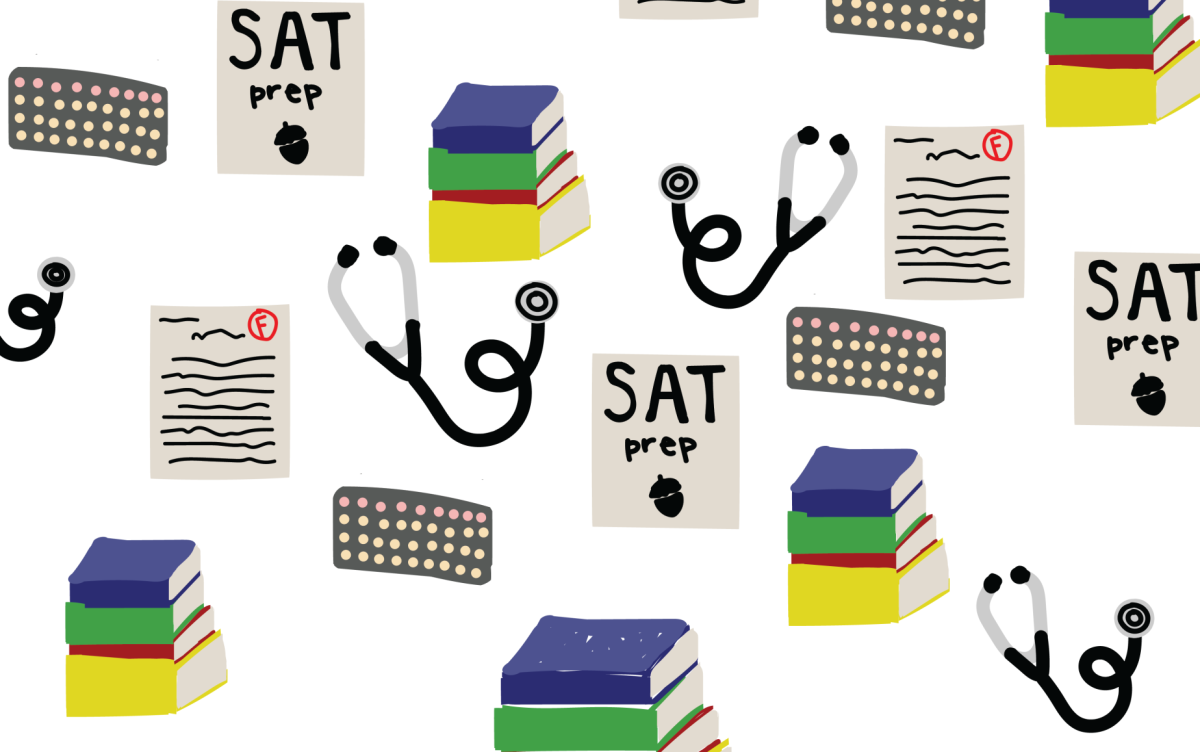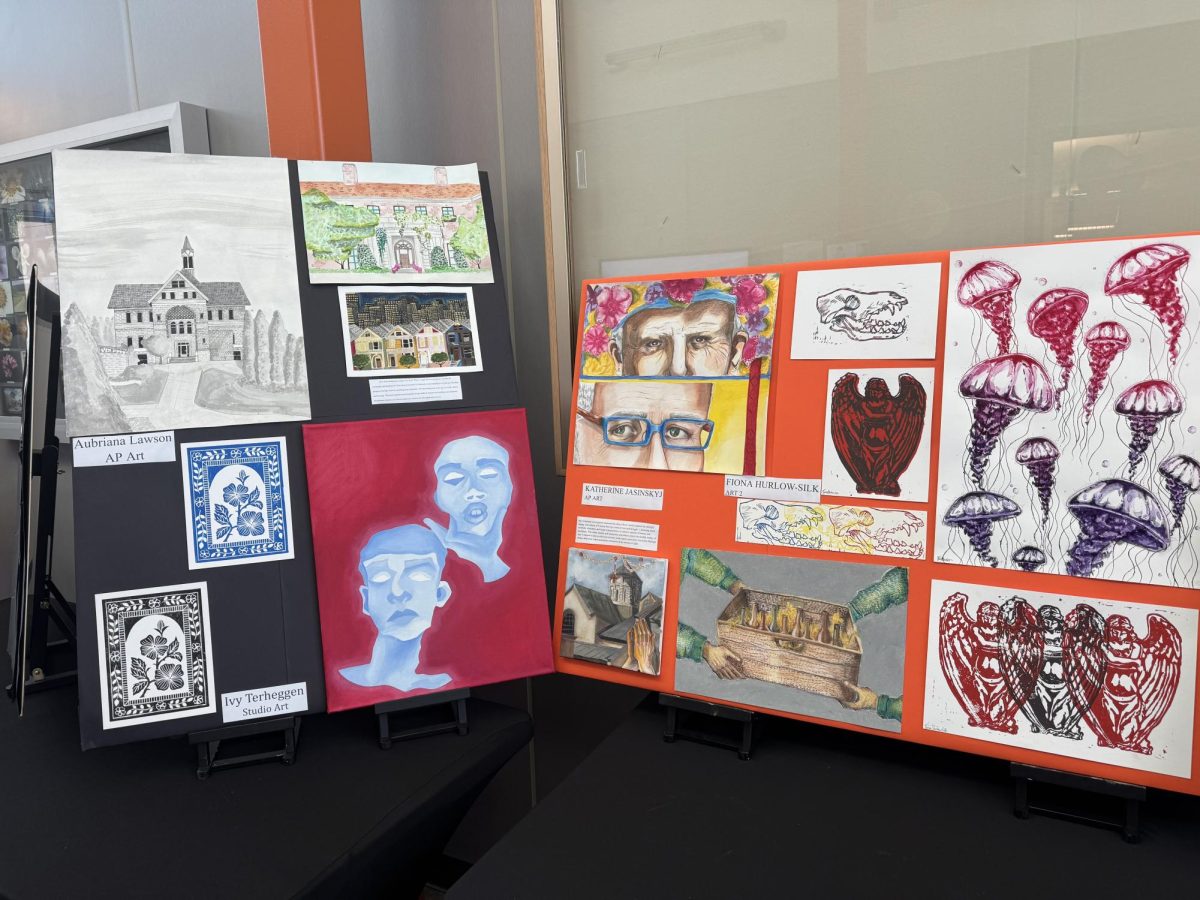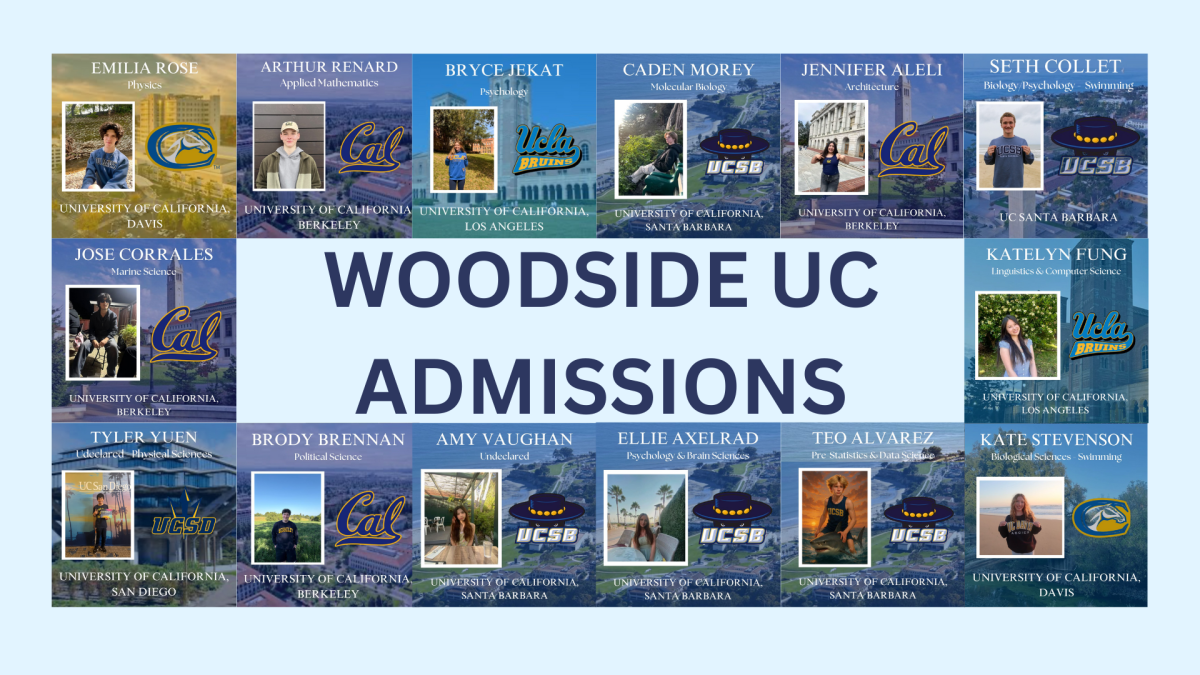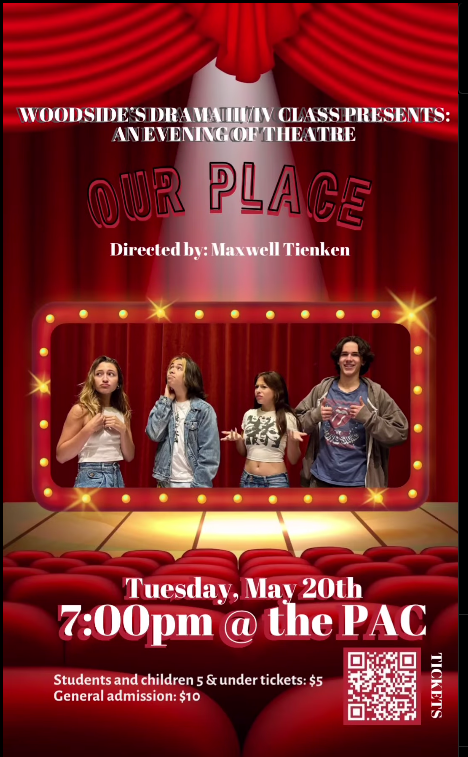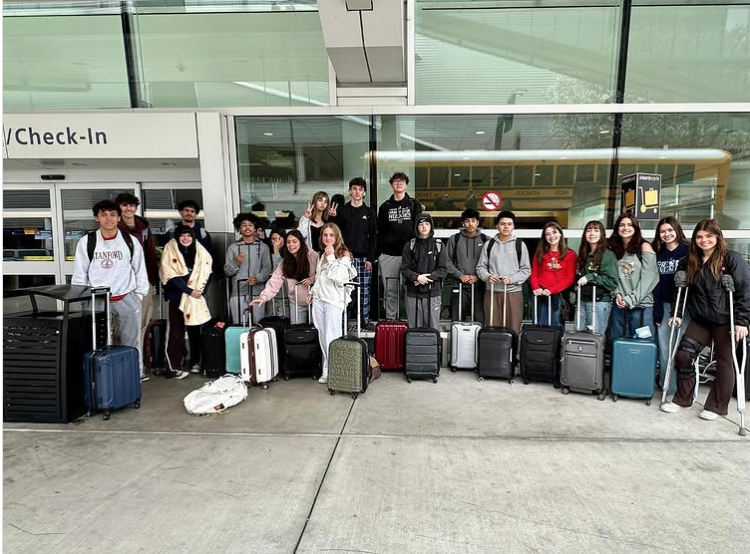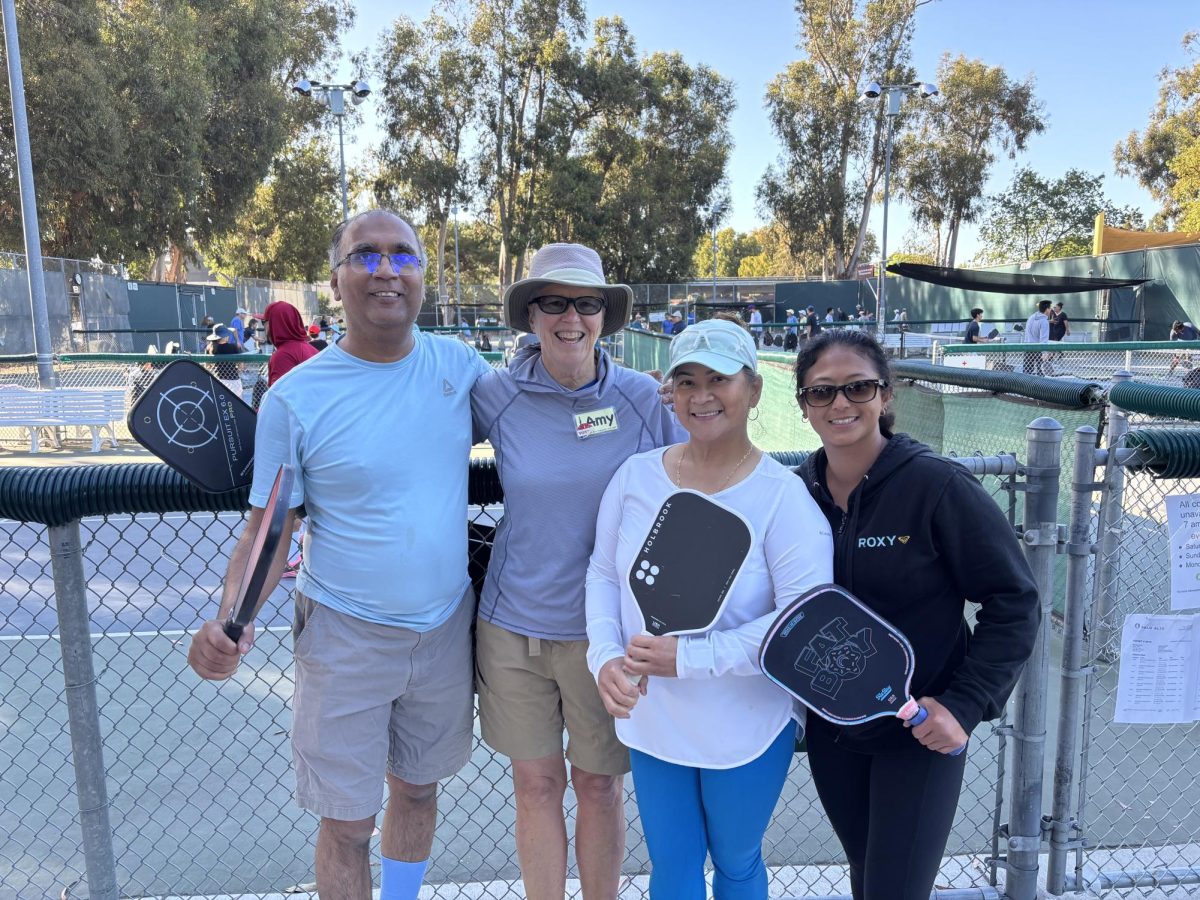School faculty members are always working to ensure a supportive learning environment–however, the responsibilities they take on address more than just the immediate academic concerns of students.
Woodside High School, a comprehensive four-year school in the Sequoia Unified School District, has roughly 1,700 students enrolled, all of whom require different supports in order to maximize their opportunities and successes as a high school student. In order to further investigate resources, specifically the underutilized ones, the Paw Print talked to faculty members and students to get a closer look at what programs are available, and how they can benefit the student body. Starting with the most basic needs of students, Health Aide Nanette Pasion explained programs that the health office can connect students with.
“We work with the District Health team to provide dental and vision services to our students,” Pasion said. “Most of the time, it is for the [students] that are uninsured and do not have access to that health care immediately. We work with those students to be sure that they can be seen.”
With approximately 6,000 uninsured children (aged 0–18) in San Mateo County, the knowledge that school can aid in access to medical services can help many students. At the same time, Pasion recognizes that it is not easy for every student to take action in asking for the help they need. She offers some advice on how students can approach her.
“It’s best that [students] do not come during class time,” Pasion said. “They can come check in during a break, brunch, lunch, unscheduled periods and then we can go from there. They just have to be willing to come to my office.”
Besides dental and vision services, the health office also works to help students address potentially taboo topics. Students who might be hesitant to seek care for medical issues they are facing may be unaware of their rights as a patient.
“I can also help with setting up confidential appointments,” Pasion said. “A lot of students do not realize that they have the right to confidentiality as a student here in our district.”
Certain programs address the following: family planning options, birth control methods, pregnancy testing, testing for sextually transmitted infections (STIs), treatment for STIs, HPV vaccines, therapy, and help with substance abuse.
“We also have a Stanford teen van that comes probably once or twice a semester,” Pasion said. “They can help out with overall care and even mental health services.”
Besides physical health issues, the Center for Disease Control states an increasing amount of young people reporting poor mental health. Woodside has implemented numerous mental health services such as the addition of the Confidential Counseling Center in F14.
“A lot of times kids come [to the health office] when they might be in a state of panic or need someone to talk to,” Pasion said.” Of course my office is always open for that as well. We also have a space primarily for that.”
Students facing battles with their mental health can go directly to F14 or talk to the health office. The school counseling department also helps to get students in contact with mental health supports.
“We will jump in and help out,” Co-Head guidance counselor Jacqueline Grimaldi said. “[We] meet with teachers, [for] academics specifically. [We make] sure that students are getting any accommodations that they need in the classes. As far as just mental health, [we make] sure that they have connections to a mental health team.”
Once students have covered their basic physical and mental health needs, the school offers further support so students can perform well academically.
“A lot of students just see us for [choosing] classes,” Grimaldi said. “They won’t necessarily think of us if they’re struggling in class and if they have a low grade”
The six school counselors—Jacqueline Grimaldi, Francisco Negri, Juan Cortez, Jimmy Hernandez, Jeanette Lok, and Elijah Thornton—split the caseloads of Woodside’s student body. Each student is assigned to a counselor for all four years of high school who will work with them to address internal and external factors affecting school performance.
“Sometimes [counselors] have to have tough conversations with parents, family members and students if they’re not connecting at home or are not able to talk about a specific subject,” Grimaldi said.
In terms of specific academic support, Grimaldi stated one Woodside program that stuck out.
“The Den is the number one most underutilized resource,” Grimaldi said.
The Den is an after school program in the multi-use room (MUR) on Mondays, Tuesdays, and Thursdays from 3:45 PM to 5:30 PM, and offers a space with teachers and peer tutors for academic support. While frequently advertised on the announcements, senior Victoria Rosenmeyer who often goes to the Den explained that there are usually only around 10 people there.
“I go to the Den to do my homework or to get help from teachers that can help me with my work,” Rosenmeyer said.
While the Den offers a space to do homework, Rosenmeyer also feels it has helped her gain knowledge beyond what will purely benefit her in the classroom.
“[It has helped with the] management of my homework time,” Rosenmeyer said. “When I get home I go straight to my homework instead of going on my phone.”
Q-Study is another program that happens simultaneously in the library. It offers a quiet space with access to numerous books and other online resources.
“We also have databases that are on all different subjects,” school librarian Anne Ken said. “They are on history, literature, opposing viewpoints, world history, US history, and science.”
Students have free access to the following databases: InfoTrac, Gale, JSTOR, and the Press Reference Database. Besides the numerous textual sources these databases offer, the school also has access to databases with video and audio resources.
“We have ProQuest through the California State Library,” Ken said. “It is free to all students in California.”
Accessing these online databases can be done outside of Q-Study. Ken told the Paw Print that the library has a pamphlet on all the resources available and all students are welcome to come directly to her for help.
“Everything is really easy to get onto,” Ken said. “Most of them, you just click ‘sign with Google’ and use your seq account.”
Many of these resources are not utilized to their fullest potential, according to Ken. She expresses that bringing in freshmen for an “orientation” on all the resources could be a beneficial way to introduce students to the library’s resources earlier on in their high school career.
“Especially until [students] get to their senior year, and they have to do the senior thesis, the databases are sometimes underutilized,” Ken said.
There are also external programs like the Boys and Girls Club. Both Grimaldi and college and career counselor Zorina Matavulj explained that not many students take advantage of programs like the Boys and Girls Club despite them being beneficial programs. Matavulj explained the connections that the College and Career Center can help students make with outside organizations during their time in high school.
“There are so many opportunities like internships and programs for a student to do over the summer after 10th grade,” Matavulj said. “To have the students connect with the college advisors [would help them] know what the possibilities are.”
Internships can be helpful for the more than 93% of students who pursue college directly after their time at Woodside.
“When it comes to college and career, [we] make sure that like we’re getting we’re getting a head start and thinking about what we want to do after high school,” Grimaldi said. “Whether that’s military, it’s [vocational/trade training], whether it’s college or work, [counselors] make sure that students are able to start thinking about that, and then connecting their academics with that.”
The College and Career Center offers support for all paths of post-high school planning, but many of the programs available can be especially beneficial to those pursuing college or university.
“[The foundation is] funding two resources,” Matavulj said. “One is called Obi Coach and it helps the kids with their personal statements and their essay writing for college applications, and the other one is AJ tutoring.”
Obi Coach has brought a free college-essay-workshop to Woodside, where students can work with a coach. Many tutoring and coaching processes for college essays can cost thousands of dollars, so Obi Coach is financially accessible to all students. Additionally, AJ tutoring offers both SAT and ACT preparation. The Woodside Foundation categorizes these programs under its College Access Program, which offers career exploration, job shadowing, and college tours.
“The most important thing[s] with college admissions are the classes the student takes and the grades that they have,” Matavulji said. “That does start in ninth grade.”
While counselors do not want to stress students out too much about the small details of college admissions, they do acknowledge the importance of pacing, especially if their plan is to pursue college and university-level education.
“Sometimes [students] only go to [college counselors] for the last step in their college application,” Grimaldi said. “It is great, [if students] have an early meeting with the college advisor, you can plan out a diverse list of colleges.”
Once students get into a college or university, the school also has ways to help students pay for their higher-level education. Furthermore, counselors have been finding more unorthodox ways to encourage these opportunities to students.
“The best way to get a kid interested in [in scholarships] is saying, ‘last year, this kid at Woodside won this $5,000 or this $7,500,’” Matavulj said. “Just them looking at a list of [scholarship] possibilities, they don’t like it.”
Counselors believe that students can truly benefit from these scholarship opportunities–however, they are not applied to as widely as they could be.
“I’m like ‘it’s money, who cares?’” Matavulj said.
To clarify–Matavulj means that not enough students are recognizing the value of applying to scholarships. All Woodside students can open the door to all these possibilities. The issue becomes whether or not they will take the step to pursue them. The school also aims to more comprehensively advertise these programs.
“I think we have to do better at marketing ourselves as well,” Grimaldi said. “We tried to get in the classroom and tell [students] what we’re here for [their] freshman year, 10th grade [and] 12th grade. Students do not see us every day so they forget.”
However, there appeared to be an agreed sentiment among Grimaldi and Matavulj that more students must increase interaction with their counselors to be reminded of these programs and get help utilizing them.
“There are three college advisors and six school counselors here at Woodside,” Matavulj said. “I don’t think students connect enough with any of us. Obviously many do, but many do not as well.”


